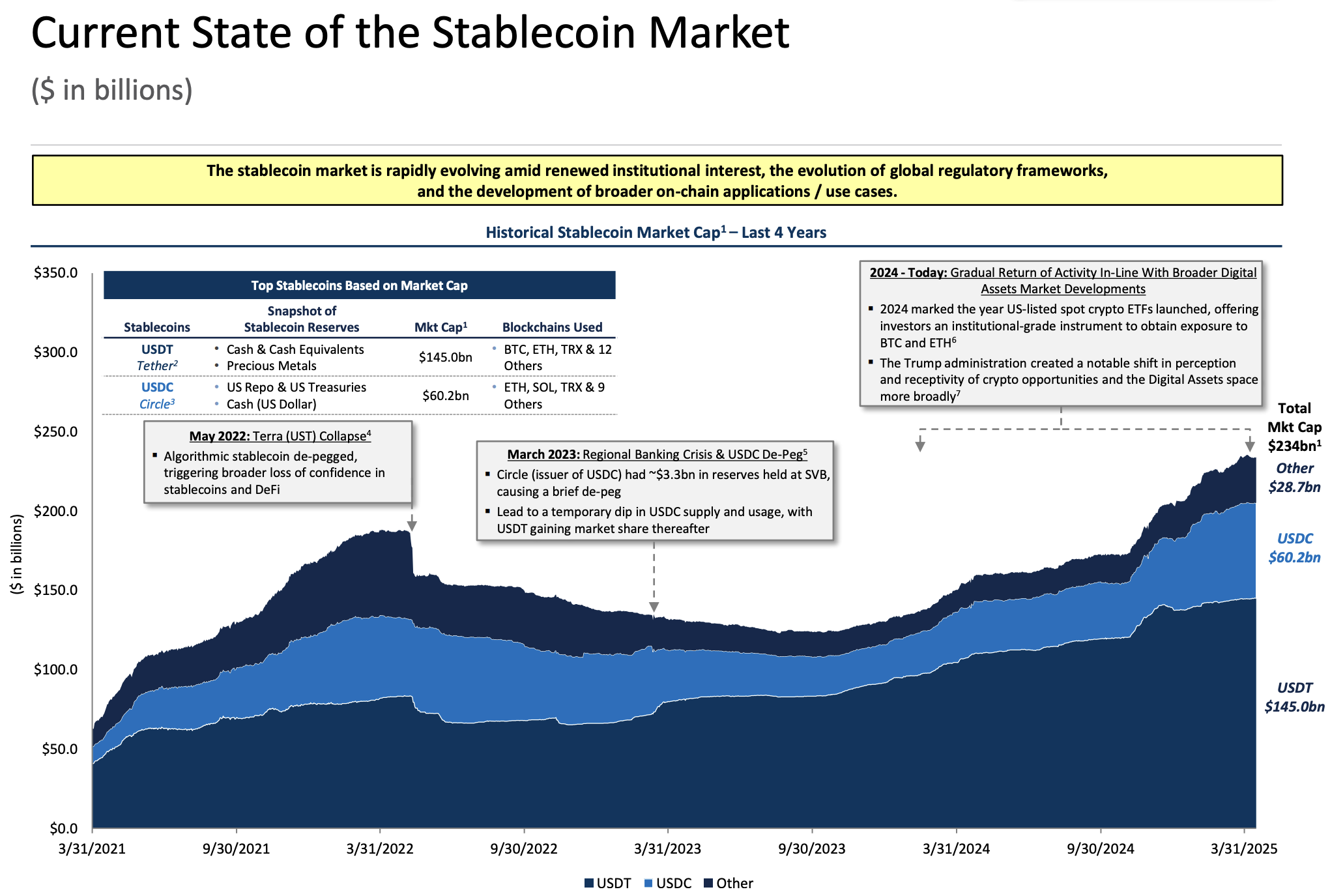MEXC Thinks It Might Happen Even Sooner
It’s official—stablecoins are no longer the quiet, dependable cousins of crypto. According to a fresh US Treasury report, these digital dollars are on track to balloon to a $2 trillion market cap by 2028, up from their modest current size of $240 billion. That’s a 7x leap—or in crypto terms, just another Tuesday.
Why the Market Is About to Go Brrr
The Treasury Borrowing Advisory Committee (yes, they sound serious) released the report on April 30, pointing to a cocktail of factors behind this stablecoin supercycle:
- Institutional demand for crypto ETFs is booming.
- Merchant integrations like PayPal are giving stablecoins real-world street cred.
- Yield-bearing stablecoins now offer passive income with less volatility.
- Regulatory clarity is clearing the fog and opening doors for traditional finance.
Basically, stablecoins are going from "niche nerd currency" to “Wall Street’s newest crush.”
MEXC to Treasury: You’re Being Too Conservative
Tracy Jin, the no-nonsense COO at MEXC, says the Treasury is being way too cautious. She boldly predicts the $2 trillion milestone might be hit by 2026—two years early.
Why? Because:
- Sovereign banks and major corporations are racing to issue stablecoins.
- Year-to-date, stablecoin demand has grown by $38 billion.
- In the past month alone, they processed $2.8 trillion in volume.
- And they now account for 1% of the global M2 USD supply.
We’re not saying stablecoins are taking over fiat… but they might be taking over fiat.
The Solana-Sized Elephant in the Room
While stablecoins are on the rise, their dominance is laser-focused: USD-pegged tokens still account for over 99% of the market. The big players are:
- Tether (USDT): $145 billion
- USDC (Circle) : $60 billion

Banks might need to step up their game, either by raising interest rates or joining the DeFi party. Because when your deposit base starts shifting into tokenized yield farms, it’s time to innovate or evaporate.
Legislation May Tip the Scales
The GENIUS Act (yes, that’s the real name) proposes stablecoin issuers hold U.S. Treasuries as reserves, making them more stable and potentially boosting demand for government debt.
This could mean:
- Reduced de-pegging drama
- Less reliance on emergency Fed lifelines
- A smoother integration into traditional finance
Or in plain English: stablecoins might become the grown-ups of crypto, responsible, regulated, and boring in the best possible way.

Disclaimer: All materials on this site are for informational purposes only. None of the material should be interpreted as investment advice. Please note that despite the nature of much of the material created and hosted on this website, HODL FM is not a financial reference resource and the opinions of authors and other contributors are their own and should not be taken as financial advice. If you require advice of this sort, HODL FM strongly recommends contacting a qualified industry professional.





